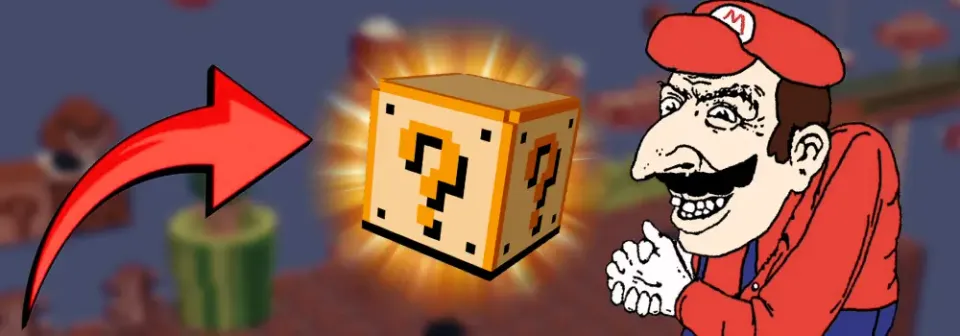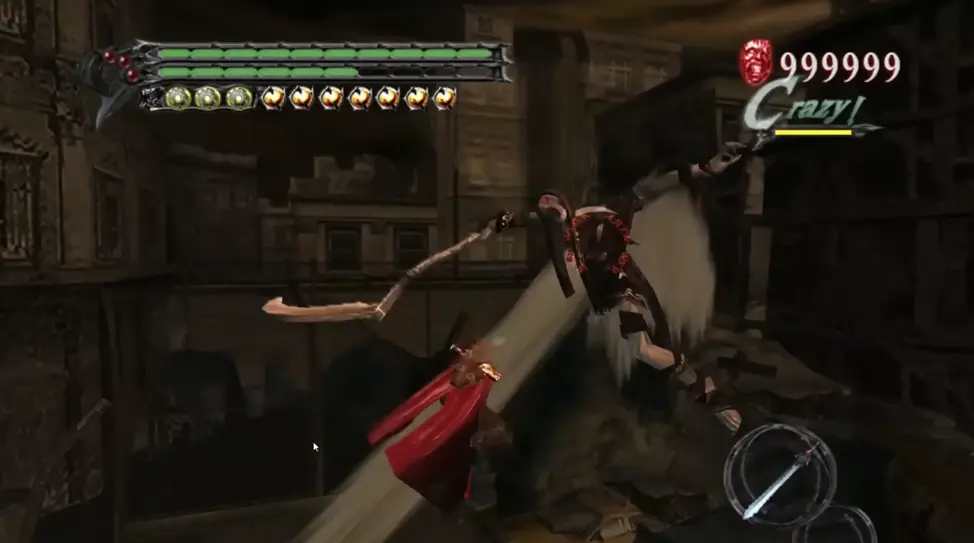Explore Wide Range of
Esports Markets

Creating a game without errors, bugs, or glitches is practically impossible. Some of these issues can ruin the gaming experience, making the game boring or even unplayable.
However, other technical problems can become iconic or cool elements that give the game a unique charm. Even better is when these bugs turn into fully-fledged gameplay mechanics.
In this article, we've compiled a list of bugs and errors that actually made games better—or, as players say, "not bugs, but features."
The famous Konami Code is probably known to everyone, especially those interested in retro games. The combination: up-up, down-down, left-right, left-right, B, A, became the world's first known cheat code, created by Kazuhisa Hashimoto while working on the NES port of the arcade game "Gradius."

This cheat code appeared accidentally due to the developer's forgetfulness. Since the game was quite difficult by the standards of the time, Kazuhisa decided to add an in-game code that unlocked most upgrades and made the game easier, allowing him to test it faster.
However, when the game was finished, he simply forgot to remove the code. Players accidentally discovered this combination, which became an exciting find for them. Konami later continued to include this code in their subsequent projects.
Other developers were also inspired by this and began adding cheat codes to their games, making life easier for players and adding fun content even before mods became a thing.
Although cheats as a phenomenon have mostly faded into the past, they still exist, particularly, unfortunately, in online games. The case of the Konami Code is not a bug or glitch, but a developer's mistake that changed the history of video games.

Due to oversights by the creators of DotA, which was a fan-made map for Warcraft 3, a couple of mechanics emerged that players still use in Dota 2. One of these mechanics is the ability to deny your own creeps in the lane, depriving the enemy hero of gold and partially of experience points.
This mechanic appeared accidentally in the first DotA. In Warcraft 3, attacking any vulnerable unit, whether neutral or allied, could kill it. The map developers forgot to disable this action.
Players started using this to gain an advantage over their opponents. Everyone liked the idea of denying creeps, so the developers decided to keep this feature, balance it, and make it a full-fledged mechanic, which carried over to Dota 2.


Another accidental mechanic in Dota 2 is stacking neutral creeps. If you provoke jungle creeps and lure them out of the spawn zone at the right time, a new pack of creatures will appear in the neutral camp. This allows the allied carry or another team member to farm more creeps and gain more gold and experience.

In the original Team Fortress mod for Quake, players encountered a situation where the nickname of an enemy team member appeared in the color of an ally. This often confused players, as the inattentive ones could fall victim to their "ally."
The mod developers learned about this bug but decided not to fix it because they had an idea to turn it to their advantage. Thus, a new character was born—the Spy, who became a fan favorite and a full-fledged role in Team Fortress 2.

In the first Red Dead Redemption, there was a glitch where some NPC models were swapped with animals, leading to funny and creepy situations with half-human, half-animal hybrids. One player captured on camera a model of a woman crossed with a donkey, dubbed "Donkey Lady."
The developers at Rockstar decided to honor this glitch in the second game. Near the town of Armadillo, you can find a well with the skeleton of a woman with a donkey’s head tied to the lever. According to a local newspaper, the origins of this creature remain a mystery.


A similar situation occurred in Minecraft. When Markus Persson was developing the game, he didn't use modeling software but coded directly. While creating the pig model, he mixed up the X and Y axis parameters, resulting in a tall, skinny pig. Markus liked the design, and after some adjustments, the Creeper was born—one of the most recognizable creatures in the world of video games.

Everyone who has played the iconic Super Mario Bros. knows about the coin blocks. But did you know that the blocks containing many coins were initially a bug? The developers hadn't planned such a mechanic. Initially, they intended to fix the bug but realized during testing that this feature was interesting. So they soon brought back the multi-coin blocks into the game.

Most players believe that you can only get 10 coins from a multi-coin block, but this is a misconception. The actual number of coins in these blocks depends on the game’s timing. If you hit the right timing, you can get 15 or even 16 coins from such a block.
For this, you need to follow the "frame rules" that the developers used. It’s also worth noting that this works the other way around. If you wait a bit after hitting the block for the first coin, you’ll get fewer coins than usual.


The famous Wall Jump, which appeared in future games of the series, was also a glitch discovered by speedrunners. It turned out that when Mario gains speed and touches the wall, repeatedly pressing the jump button could make him bounce off it.
A similar situation occurred with wall jumps in Ninja Gaiden. However, in that case, the developers intended the wall-jumping mechanic from the start, whereas the Wall Jump on a single wall was an art mastered by skilled players, who could perform this move. It later became a signature feature of the series.

The idea for the Clone Cherry in Super Mario 3D World, according to director Kenta Motokura, arose from a designer's mistake when they accidentally added multiple Marios to a single location while creating a level. The concept intrigued the team, and they decided to develop it into a full-fledged mechanic.

The famous Rocket Jump mechanic, which can be performed in some games using a rocket launcher, was originally a bug in Quake, caused by the game engine itself, which simulated realistic object recoil.
However, the first analog of the Rocket Jump, which was also unintended, appeared in the first Doom game. Although the game didn’t allow the player to jump, it was possible to perform a horizontal Rocket Jump if you stood close to a wall and shot it with a rocket launcher.
This move allowed players to reach the secret level E3M9 from level E3M6, as demonstrated by John Romero—one of the developers and founders of ID Software. The first game to officially use Rocket Jump as a full-fledged mechanic was Marathon in 1996.


Thanks to an error in the Quake Engine, the Strafe Jump mechanic, commonly known as Bunny Hop, emerged and carried over to other games, including Counter-Strike and Half-Life.
Players noticed that if you move forward at speed and jump diagonally while turning the camera in the desired direction, you could achieve high movement speed. This happened because the speed vectors were added rather than averaged. Bunny Hop is still used by many speedrunners in projects that allow such a trick.

Today, it’s hard to imagine hack-and-slash games without the ability to juggle enemies in the air while performing long combo attacks. Devil May Cry was the pioneer of this, but this concept emerged from an interesting visual bug in another game they were developing, Onimusha, which they worked on in parallel with DmC.
Hideki Kamiya—a former Capcom game designer—noticed something interesting when watching one of his colleagues play Onimusha. When the player attacked enemies in the air (during a fall), they seemed to be suspended there and couldn't fall or attack back.
This scene was captivating and spectacular in the developers’ opinion, so they decided to use this mechanic in Devil May Cry, allowing players to combine melee and ranged attacks to achieve higher combo points. This visual bug became a feature not only of the DmC series, but of slashers games in general.

As we can see, the presence of bugs and errors is one of the mechanisms that can help games become better. They often allow for the creation of new mechanics or make certain elements more interesting for the player, fundamentally changing the approach to a specific project or the gaming industry as a whole.
Comments